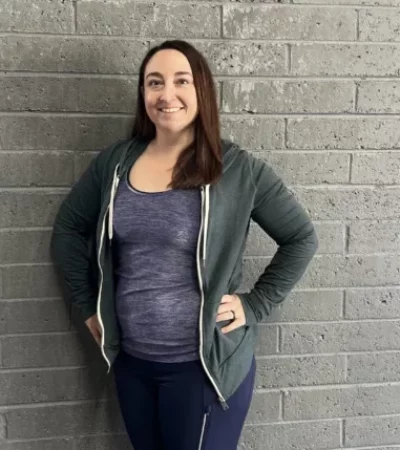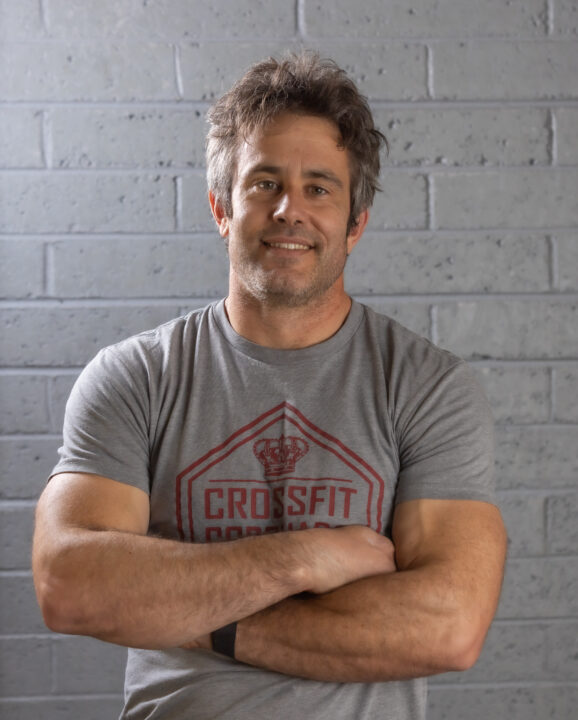By Clint Russell, DPT
Some of you guys may wonder why we stretch a certain way. What is contract-relax stretching, and why is it more effective than static stretching? Static stretching is simply that, the body stays static in one place. Think bending over and touching your toes. You are just hanging out. Then there is what’s called active inhibition stretching. This is also called proprioceptive neuromuscular facilitation, or PNF. Think you are actively contracting to cause the stretch reflex of a muscle to be inhibited utilizing your body’s own defense mechanisms to your advantage. There are 3 types of active inhibition stretching. First is contract-relax stretching. We will use the wall stretch in the video below. I push my hands into the wall, the Golgi-tendon-organ, or GTO, which sits at the musculo-tendonous junction, senses tension in the muscle. Its job is to shut the muscle down if it detects excessive force. We cause this to happen be applying a stretch, then a light isometric contraction. This causes autogenic inhibition, or the GTO deactivates our muscle and causes it to fall farther into the stretch. This is once again, performed by assuming a stretch position, contracting the muscle to be stretched, and then you hold for 5-10 sec, relaxing for 5-10 seconds. Repeat this process for 1-2 minutes, usually 5-10 sets. You will be amazed at how much faster this works. [1]
The next method is contracting the opposite muscle to be stretched, or the antagonist. This calls on the muscle spindle, and organelle that resides inside the muscle and detects excessive stretch, to deactivate the stretch reflex. This is called reciprocal inhibition. A great example is squeezing your butt in the couch stretch. The forces hip extension, which lengthens the rectus femoris, as well as the other hip flexors. The muscle spindle senses the extra tension, and shuts of the stretch reflex allowing you to move further into the stretch. A great way to utilize this is alternate 5 on 5 off for 10 sets just like the previous example.[1]
The next method is a combo of both. We can contract the muscle being stretched for 5, then its antagonist for 5. We can use the same rep scheme of 5/5 for 10 sets. If you look carefully at the warmups that we do here at CrossFit Coronado and Outlier CrossFit, you will see all of this happens. Think about the inchworm. In order to bring one foot up, the other hamstring must contract to provide stability. This causes autogenic inhibition of one hamstring and reciprocal inhibition of the other.
In my experience, as a coach and athlete, the first method of contract relax, utilizing autogenic inhibition, is the most effective. The others work well, but can get a bit confusing to articulate to larger groups, and in my opinion, don’t provide as fast and lasting of effects.
Here are some easy examples.
Here is a video I made regarding overhead position.
Here is a banded couch stretch example. This band also works on the hip joint capsule. More on that in my previous blog regarding hip mobility.
Stress/Strain Curve:
This is a stress strain curve. The toe region, is where the material, muscle in this case, is so slack that stress produces proportionally more strain. The elastic region is where the material is deforming under stress, but will return to normal length after the stress stops. The plastic region, is where the muscle has been stress to a point that it assumes a new length.
Why does all of this matter? Well, because time is of the essence. Our goal is to make a change in the tissue length. We need to cause enough stress in order to do so. Contractile tissue must receive enough stress to get into the plastic region in order to cause change. If stressed only to the elastic region, the tissue will revert back to is its original state.[2]
- Lisa Chase, Megan Schooley. PHT 5 234 C 002 General Therapeutic Exercise 1. 2012 USA. 1 University Boulevard St. Augustine, FL 32086. Unit 3 Stretching and mobility impairment.
- Gerard Gorniak. Biomechanics. 2013. USA. 1 University Boulevard St. Augustine, FL 32086.







